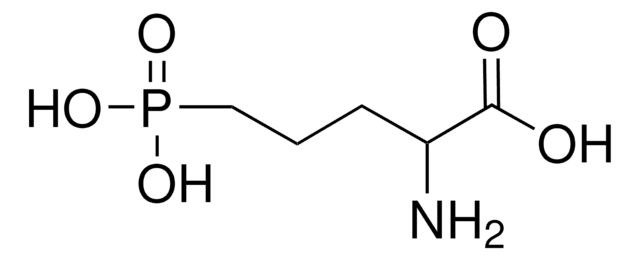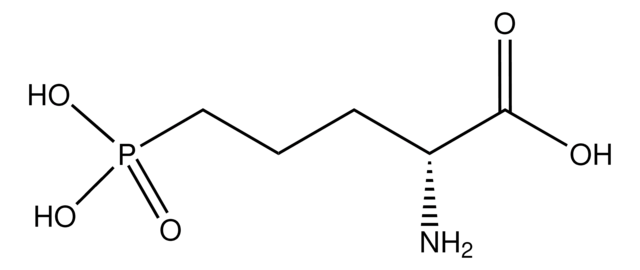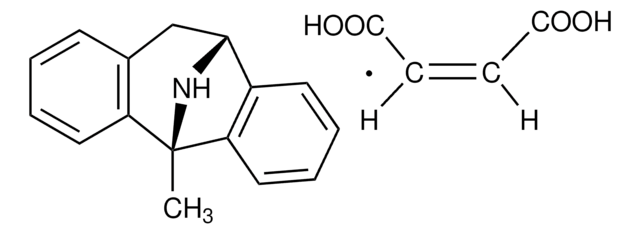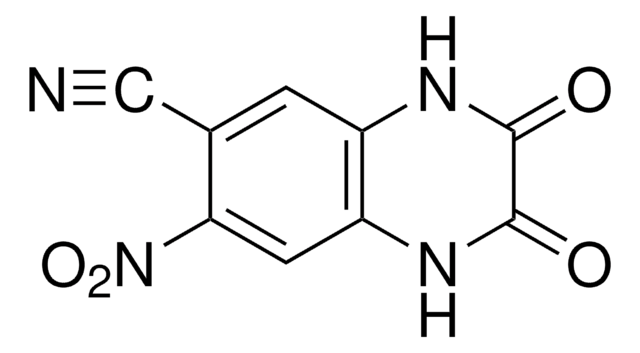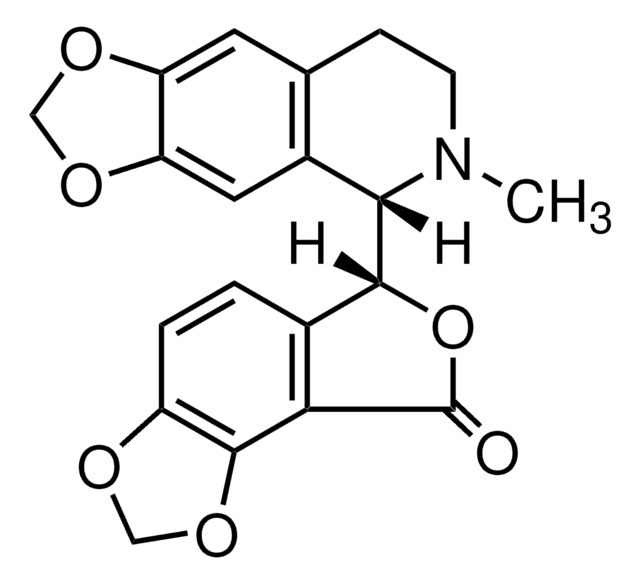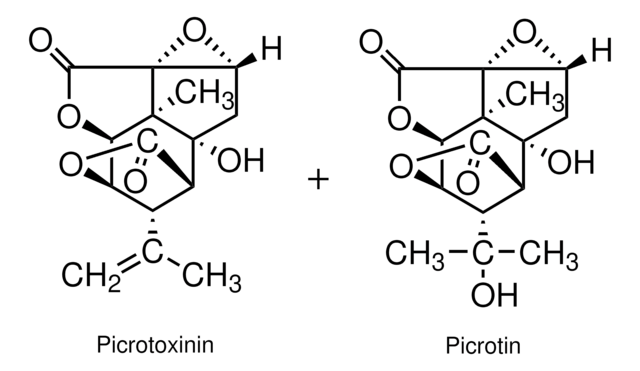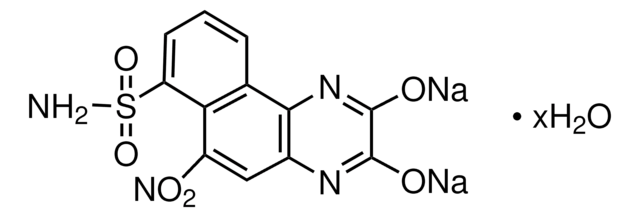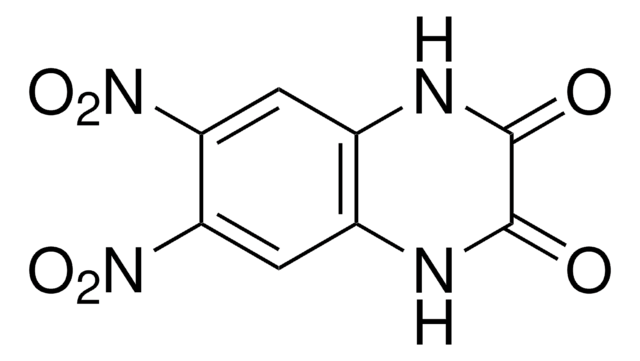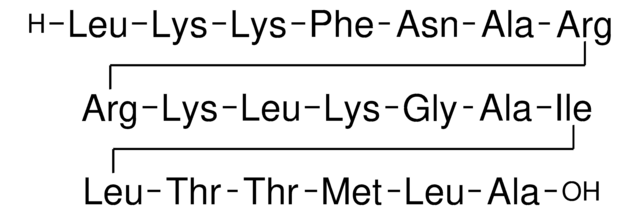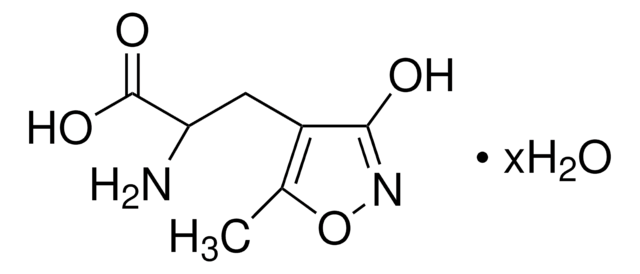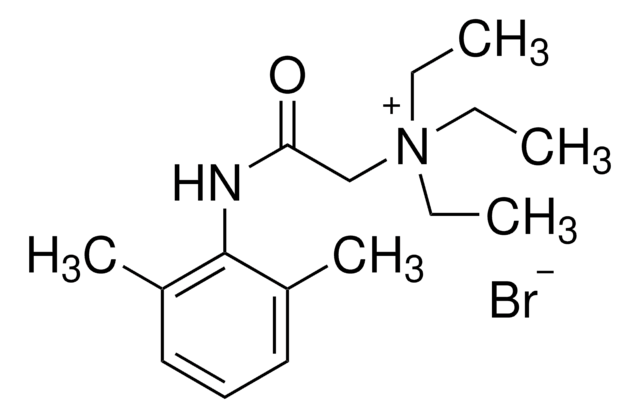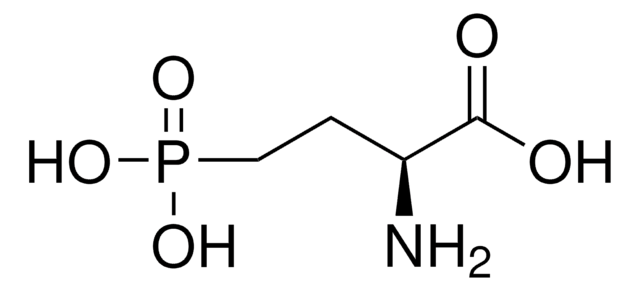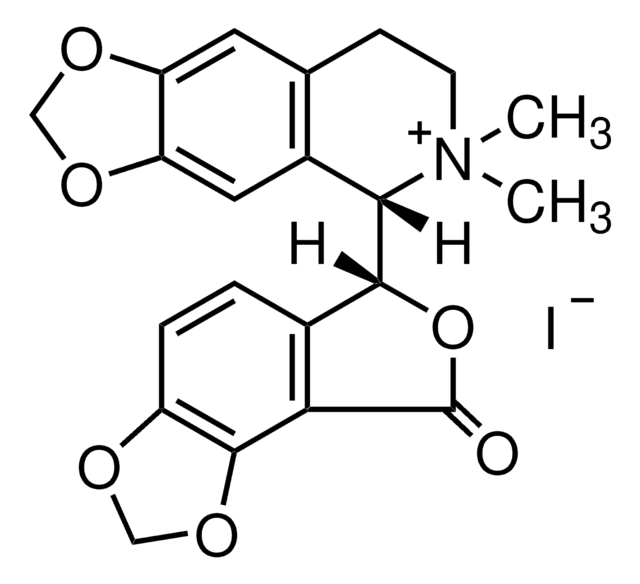C239
CNQX disodium salt hydrate
≥98% (HPLC), solid, AMPA/kainate receptor antagonist.
Sinónimos:
6-Cyano-7-nitroquinoxaline-2,3-dione disodium salt hydrate
About This Item
Productos recomendados
Nombre del producto
CNQX disodium salt hydrate, ≥98% (HPLC), solid
Quality Level
assay
≥98% (HPLC)
form
solid
storage condition
protect from light
color
orange to red
solubility
H2O: >2 mg/mL (warmed)
SMILES string
O.[Na+].[Na+].[O-]c1nc2cc(C#N)c(cc2nc1[O-])[N+]([O-])=O
InChI
1S/C9H4N4O4.2Na.H2O/c10-3-4-1-5-6(2-7(4)13(16)17)12-9(15)8(14)11-5;;;/h1-2H,(H,11,14)(H,12,15);;;1H2/q;2*+1;/p-2
InChI key
LCDWHGXMFAZHEO-UHFFFAOYSA-L
Gene Information
human ... ADORA1(134) , ADORA2A(135) , ADORA2B(136) , ADORA3(140) , GRIA1(2890) , GRIA2(2891) , GRIA3(2892) , GRIA4(2893)
Application
- as a competitive non-NMDA receptor antagonist and competitive AMPA/kainate receptor antagonist in neuronal cultures(110)
- as a glutamatergic blockers for measuring inhibitory postsynaptic currents in projection neurons(111)
- as a AMPA glutamate receptor antagonist prefrontal cortex neurons(112)
Biochem/physiol Actions
Features and Benefits
Storage Class
11 - Combustible Solids
wgk_germany
WGK 3
flash_point_f
Not applicable
flash_point_c
Not applicable
ppe
Eyeshields, Gloves, type N95 (US)
Elija entre una de las versiones más recientes:
¿Ya tiene este producto?
Encuentre la documentación para los productos que ha comprado recientemente en la Biblioteca de documentos.
Los clientes también vieron
Contenido relacionado
DISCOVER Bioactive Small Molecules for Neuroscience
Nuestro equipo de científicos tiene experiencia en todas las áreas de investigación: Ciencias de la vida, Ciencia de los materiales, Síntesis química, Cromatografía, Analítica y muchas otras.
Póngase en contacto con el Servicio técnico